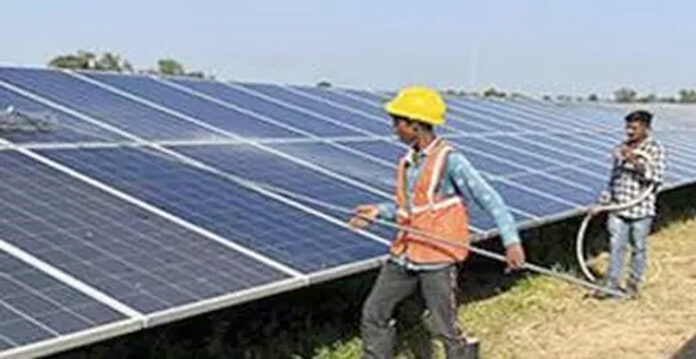India’s commitment to achieving Net Zero emissions by 2070 is catalyzing a major transformation in its energy sector, with solar power playing a pivotal role in this journey. Abundant sunlight, rapidly decreasing technology costs, robust government support, and a growing skilled workforce have collectively positioned solar energy at the heart of India’s renewable strategy. While the country has made significant strides in solar energy adoption, it faces several challenges that require innovative policy solutions and strategic foresight to maintain its momentum.
Over the past decade, India has made remarkable progress in solar energy. The nation has not only met but exceeded its renewable energy targets, with solar power now accounting for over 60% of the country’s renewable energy mix. By 2024, India surpassed the 100 GW mark in solar capacity, establishing itself as a global leader in solar energy. States like Rajasthan are leading the charge, with the state’s solar capacity exceeding 24 GW. Additionally, a 19% increase in solar generation from 2023 to 2024 is a clear indicator of India’s rapid expansion in this sector, with solar installations accounting for over two-thirds of new renewable capacity.
India’s commitment to global solar collaboration is evident through its active role in the International Solar Alliance (ISA), an initiative aimed at mobilizing over $1 trillion in investments for developing countries to accelerate solar energy adoption. National agencies, especially the Solar Energy Corporation of India (SECI), have been instrumental in driving the development and implementation of solar projects under the National Solar Mission.
Also Read: India’s Rising Global Influence: A Vision for a Secure, Stable, and Prosperous Future
However, despite these impressive achievements, India faces several significant hurdles in achieving full solar integration. One of the key challenges is the limited integration of solar installations into the national grid. Currently, only 16% of solar capacity is connected to the grid, preventing the country from fully capitalizing on its vast solar potential. Additionally, regional disparities in solar development are evident, with states like Rajasthan and Gujarat leading the way, while many eastern and northeastern regions lag behind. This uneven distribution of resources highlights the need for greater regional equity in solar adoption.
Financial constraints also remain a significant obstacle. While government subsidies help reduce costs, the high capital required for large-scale solar installations, coupled with elevated interest rates and delayed payments, deters private investment. Moreover, manufacturers face challenges due to a shortage of competitively priced solar cells, exacerbated by stringent Domestic Content Requirements that strain local production capabilities. These financial barriers not only hinder current projects but also threaten future growth in the sector.
India’s reliance on imported components is another critical issue. Despite having a domestic production capacity of 11 GW for solar modules, the country still depends on global supply chains for key items such as polysilicon, wafers, and solar cells. This dependency makes India vulnerable to disruptions in the global supply chain, especially in light of geopolitical tensions and trade imbalances, with China continuing to dominate global solar manufacturing. Furthermore, the scarcity of critical minerals like cobalt, nickel, and lithium—key to solar panel production—adds another layer of complexity to India’s solar ambitions.
Local challenges, including resistance from local communities and farmers to land acquisition for solar projects, further complicate the sector’s expansion. In Rajasthan, for instance, disputes over land rights have led to project cancellations, underscoring the need for transparent and inclusive processes that respect local interests and ensure fair compensation. Addressing these concerns will be vital to securing community support and facilitating smoother project implementation.
To overcome these challenges, India must adopt a multifaceted strategy. Strengthening policy frameworks to provide long-term stability is essential, as is enhancing cooperation between states and ensuring reliable access to energy data for effective monitoring. Public-private partnerships can play a crucial role in expanding solar adoption, especially in underserved regions, by providing risk mitigation instruments that attract investment. Promoting the domestic manufacturing of solar panels and critical components will reduce import dependency and bolster India’s energy security. Furthermore, investing in workforce development to build a skilled labor pool for solar installation, maintenance, and manufacturing will be key to sustaining growth in the sector.
India’s path to Net Zero by 2070 is ambitious, but with continued government backing and strategic collaboration between the public and private sectors, the country is well-positioned to lead the global solar revolution. By focusing on robust policy support, financial innovation, domestic manufacturing, and community engagement, India can unlock the full potential of its solar resources, driving both economic growth and environmental sustainability.
(This story is sourced from a third-party syndicated feed. Raavi Media takes no responsibility or liability of any nature. Raavi Media management/ythisnews.com can alter or delete the content without notice for any reason.)


